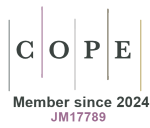Patient-reported outcomes in epilepsy: a case study exploring their usage and impact
DOI:
https://doi.org/10.33393/grhta.2024.3020Keywords:
Economics, Epilepsy, Patient-Reported Outcomes, SeizureAbstract
Background: This study aimed to obtain insights from epilepsy specialists on the use of Patient-Reported Outcome (PRO) measures and how they can affect the management of people with epilepsy and healthcare resource utilization.
Methods: The heads of two referral units for people with epilepsy at one tertiary care hospital were invited to respond to a structured survey.
Results: Paper-based questionnaires and face-to-face interviews were the main modalities used to measure the quality of life of people with epilepsy. The Quality of Life in Epilepsy Inventory-31 (QOLIE-31), the Adverse Event Profile (adult centre), the Generalized Anxiety Disorder-7, Short-Form Health Survey 36, PSY-Flex, SAFA and Child Behavior Checklist (paediatric centre) were the most used scales. There was consensus about the favourable impact of PRO upon patient management, disease management and measurement of the success of a treatment. Both respondents considered the PRO as important as other main indicators like efficacy and tolerability of the treatment. Lack of time, personnel and economic resources was identified as a barrier on the use of PRO. The PRO could reduce the number of visits, exams and treatments, and increase the time spent on each patient and the number of neuropsychological, psychological and rehabilitation services. The standardized use of PRO was considered useful and the increase in human resources was considered a priority to achieve this goal.
Conclusions: Despite the heterogeneity in the actual collection of PRO, there was a uniform perception about their role to optimize the care of people with epilepsy.
References
- Food and Drug Administration. U.S. Department of Health and Human Services. Patient-Reported Outcome Measures: use in medicinal product development to support labeling claims. Guidance for Industry. December 2009. http://www.fda.gov/downloads/Drugs/GuidanceComplianceRegulatoryInformation/Guidances/UCM193282.pdf. Accessed September 2023.
- Asadi-Pooya AA, Brigo F, Lattanzi S, Blumcke I. Adult epilepsy. Lancet. 2023;402(10399):412-424. https://doi.org/10.1016/S0140-6736(23)01048-6 PMID:37459868 DOI: https://doi.org/10.1016/S0140-6736(23)01048-6
- Catalyst NE. What is value-based healthcare? NEJM Catal. 2017;3(1).
- Porter I, Gonçalves-Bradley D, Ricci-Cabello I, et al. Framework and guidance for implementing patient-reported outcomes in clinical practice: evidence, challenges and opportunities. J Comp Eff Res. 2016;5(5):507-519. https://doi.org/10.2217/cer-2015-0014 PMID:27427277 DOI: https://doi.org/10.2217/cer-2015-0014
- International consortium for Health Outcomes Measurement (ICHOM). Patient-Centered Outcome Measures. Pediatric and Adult Epilepsy. https://connect.ichom.org/patient-centered-outcome-measures/pediatric-and-adult-epilepsy. Accessed September 2023.
- Chiang S, Moss R, Stern JM, et al. Development of a core outcome set for quality of life for adults with drug-resistant epilepsy: a multistakeholder Delphi consensus study. Epilepsia. 2023;64(1):170-183. https://doi.org/10.1111/epi.17461 PMID:36347817 DOI: https://doi.org/10.1111/epi.17461
- Vonck K, Biraben A, Bosak M, et al. Usage and impact of patient-reported outcomes in epilepsy. Brain Behav. 2023;13(12):e3342. https://doi.org/10.1002/brb3.3342 PMID:37997564 DOI: https://doi.org/10.1002/brb3.3342










